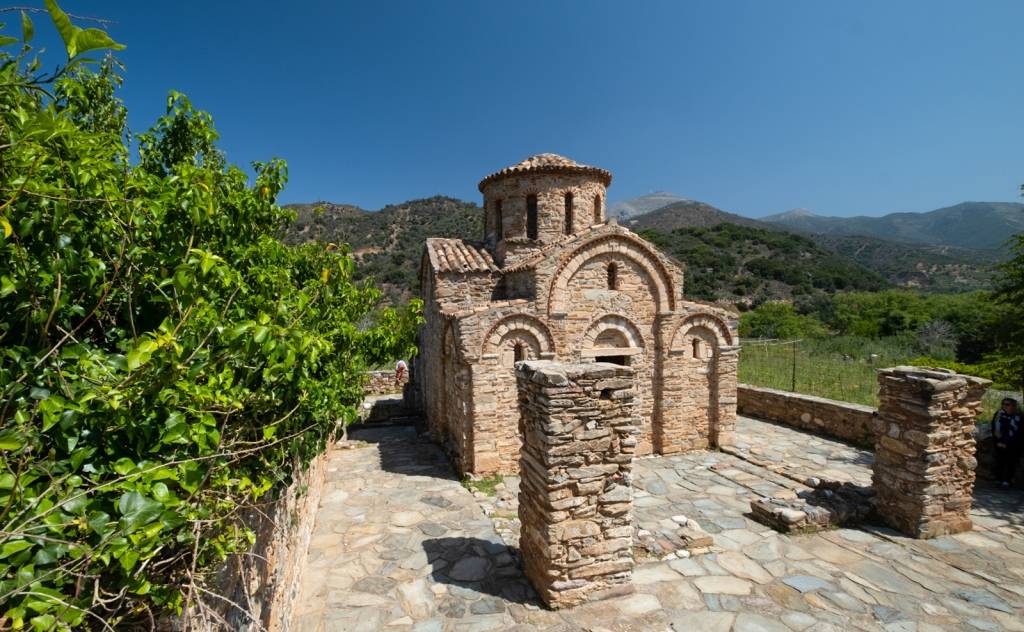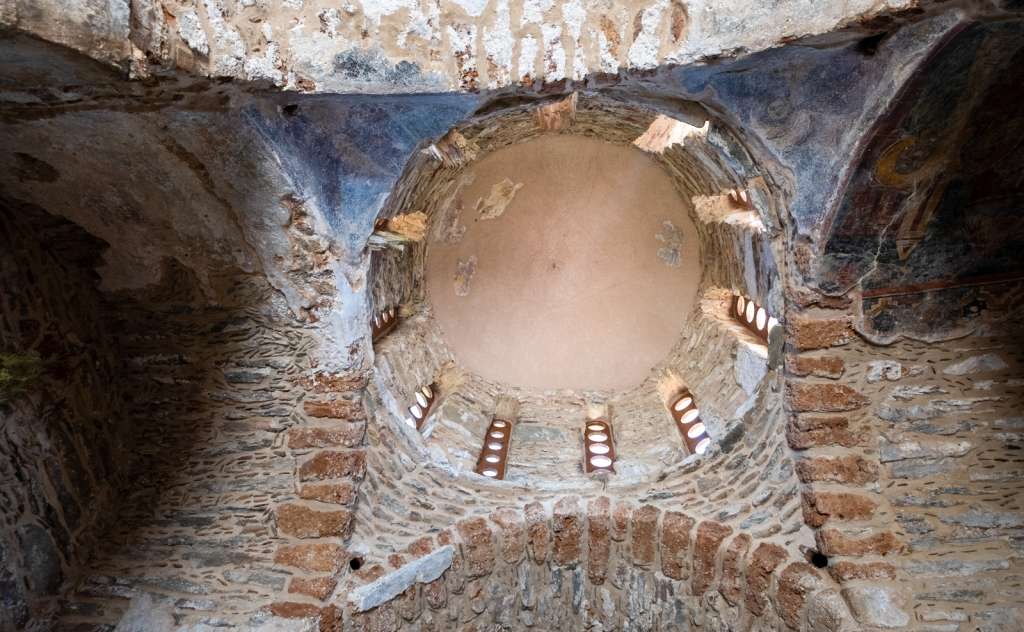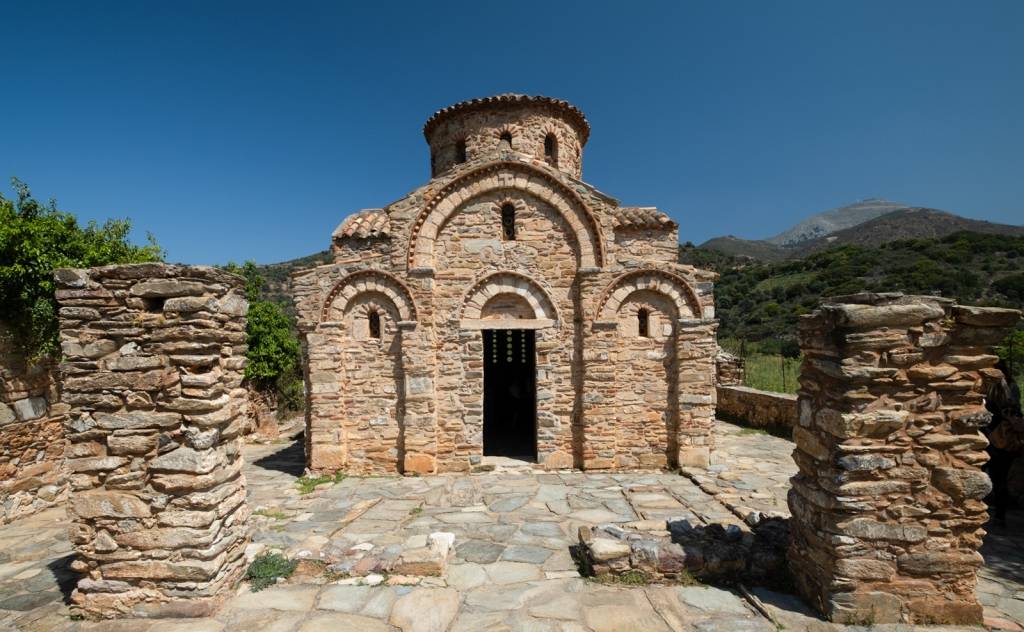Church of the Presentation of the Virgin
The Church of the Presentation of the Virgin (also known as the Church of the Virgin Mary) is located in the village of Fodele, in the old settlement of Skotini (at the Lumbinies area), among orange groves and very close to the Dominikos Theotokopoulos Museum. The Byzantine church was built in the 11th century on the eastern half of an earlier, 6th century, three-aisled basilica, the floor of which was decorated with marble. It belongs to the simple four-column cruciform inscribed with a domed church type of the Greek School, without a narthex. It is said, in fact, that the Early Christian basilica was Domenikos Theotokopoulos’ great inspiration for hagiography.
Today, part of the external walls of the three-aisled basilica survives, while two pillars have been integrated into the walls of the current church. The incorporation of the old walls is responsible for the absence of certain features, such as the decorative blind arches on the east side. To the west, the façade and corner compartments are adorned with simple arches, accentuated by a serrated band. The cylindrical dome has eight windows with arched bricks and a conical roof (as is usual in the temples of Crete), while a serrated strip surrounds it. Also, the dome rests on four columns of typical masonry, covered with mortar with engravings that mimic isodome.
The arch of the sanctuary is much smaller than the Early Christian basilica and has a three-lobed window with equal-height lobes supported by small marble columns. At the same time, the corner compartments are covered by cruciform domes, according to the School of Constantinople tradition. From the original iconostasis, a marble shield that bears a medal in the form of a button and a frame made of heart-shaped leaves is preserved.
The church of Panagia (Virgin Mary) saves two layers of mural decoration. The oldest layer is located in the west corner apartments and dates back to the 11th century. This layer is considered extremely important, as few specimens of frescoed temples of this period are preserved in Crete. The quality of the painting and its classicist character (where the figures are rendered with broad free touches and low relief) testify to the direct dependence of the artwork on the artistic centres of Istanbul. The frescoes of the south antenna of the cross belong to the painting layer, which, according to the founding inscription, dates back to 1323. Here, the frescoes represent the local artistic tradition of a folk character. Finally, a series of full-length saints and martyrs develops in dense formation on the church's north wall, with Saints Constantine and Helen standing out.






